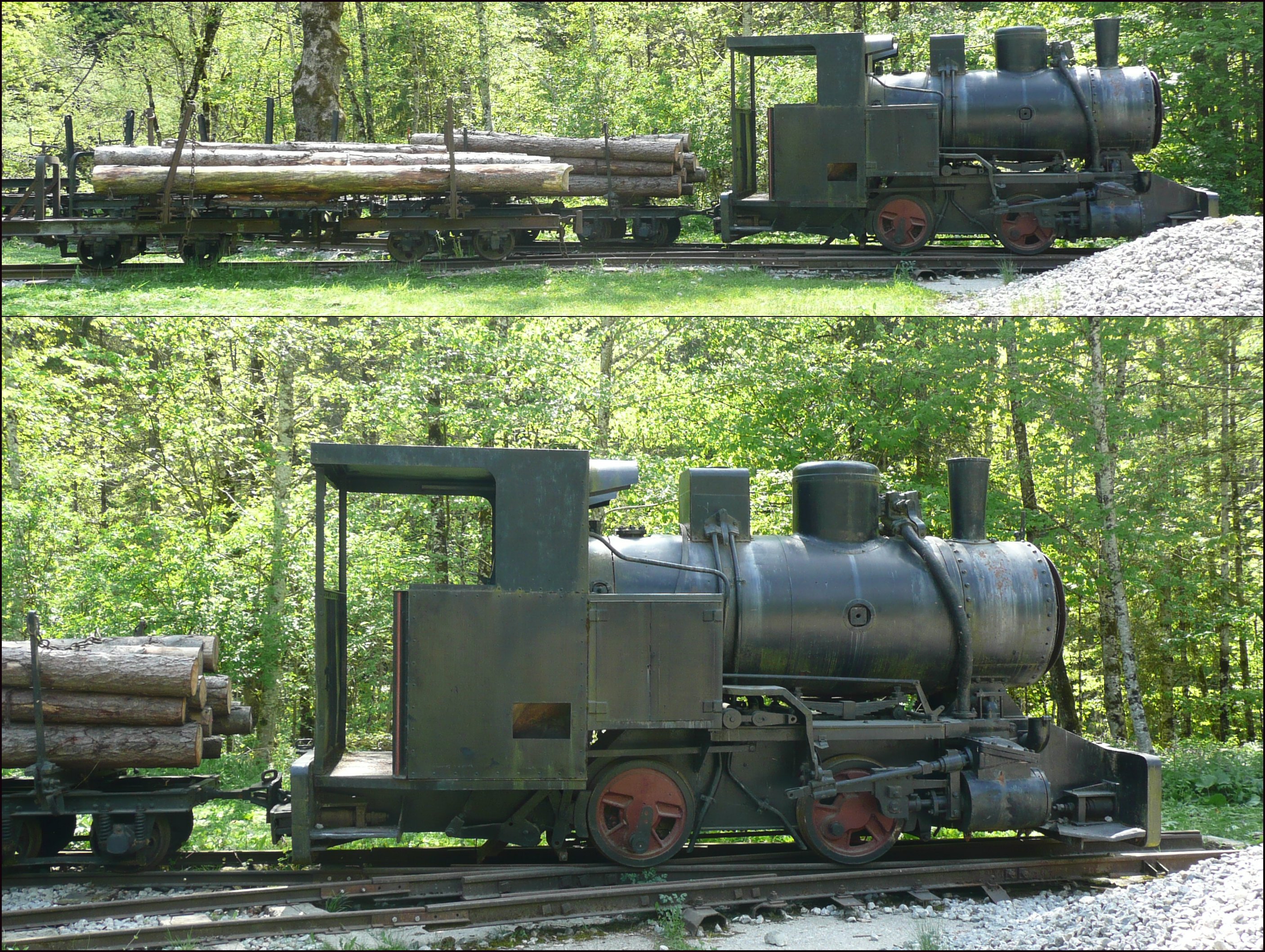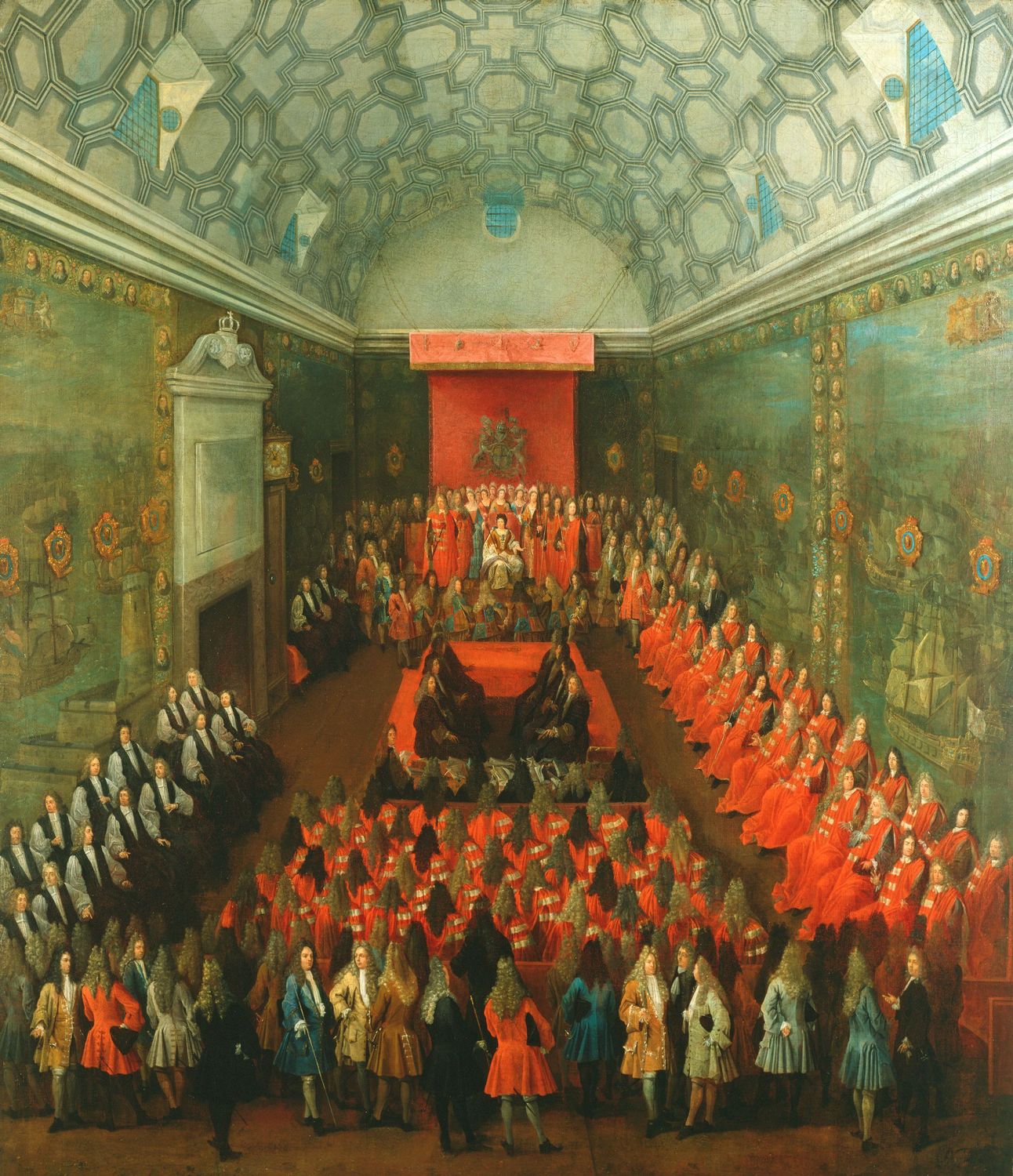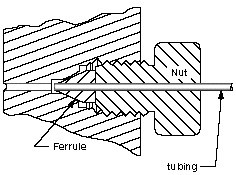|
Tramway (industrial)
Tramways are lightly laid industrial railways, often not intended to be permanent. Originally, rolling stock could be pushed by humans, pulled by animals (especially horses and mules), cable-hauled by a stationary engine, or pulled by small, light locomotives. Tramways can exist in many forms; sometimes simply tracks temporarily placed on the ground to transport materials around a factory, mine or quarry. Many use narrow-gauge railway technology, but because tramway infrastructure is not intended to support the weight of vehicles used on railways of wider track gauge, the infrastructure can be built using less substantial materials, enabling considerable cost savings. The term "tramway" is not used in North America, but is commonly used in the United Kingdom and elsewhere where British railway terminology and practices influenced management practices, terminologies and railway cultures, such as Australia, New Zealand, and those parts of Asia, Africa and South America that c ... [...More Info...] [...Related Items...] OR: [Wikipedia] [Google] [Baidu] |
Somerset
Somerset ( , ), Archaism, archaically Somersetshire ( , , ) is a Ceremonial counties of England, ceremonial county in South West England. It is bordered by the Bristol Channel, Gloucestershire, and Bristol to the north, Wiltshire to the east, Dorset to the south-east, and Devon to the south-west. The largest settlement is the city of Bath, Somerset, Bath, and the county town is Taunton. Somerset is a predominantly rural county, especially to the south and west, with an area of and a population of 965,424. After Bath (101,557), the largest settlements are Weston-super-Mare (82,418), Taunton (60,479), and Yeovil (49,698). Wells, Somerset, Wells (12,000) is a city, the second-smallest by population in England. For Local government in England, local government purposes the county comprises three Unitary authorities of England, unitary authority areas: Bath and North East Somerset, North Somerset, and Somerset Council, Somerset. Bath and North East Somerset Council is a member of ... [...More Info...] [...Related Items...] OR: [Wikipedia] [Google] [Baidu] |
Trolleybus
A trolleybus (also known as trolley bus, trolley coach, trackless trolley, trackless tramin the 1910s and 1920sJoyce, J.; King, J. S.; and Newman, A. G. (1986). ''British Trolleybus Systems'', pp. 9, 12. London: Ian Allan Publishing. .or trolleyDunbar, Charles S. (1967). ''Buses, Trolleys & Trams''. Paul Hamlyn Ltd. (UK). Republished 2004 with or 9780753709702.) is an electric bus that draws power from dual overhead wires (generally suspended from roadside posts) using spring-loaded or pneumatically raised trolley poles. Overhead line#Parallel overhead lines, Two wires, and two trolley poles, are required to complete the electrical circuit. This differs from a tram or streetcar, which normally uses the track as the return path, needing only one wire and one pole (or pantograph (transport), pantograph). They are also distinct from other kinds of Battery electric bus, electric buses, which usually rely on Automotive battery, batteries. Power is most commonly supplied as 600-volt ... [...More Info...] [...Related Items...] OR: [Wikipedia] [Google] [Baidu] |
Overhead Line
An overhead line or overhead wire is an electrical cable that is used to transmit electrical energy to electric locomotives, Electric multiple unit, electric multiple units, trolleybuses or trams. The generic term used by the International Union of Railways for the technology is ''overhead line''. It is known variously as overhead catenary, overhead contact line (OCL), overhead contact system (OCS), overhead equipment (OHE), overhead line equipment (OLE or OHLE), overhead lines (OHL), overhead wiring (OHW), traction wire, and trolley wire. An overhead line consists of one or more wires (or Overhead conductor rail, rails, particularly in tunnels) situated over rail tracks, raised to a high electrical potential by connection to feeder stations at regularly spaced intervals along the track. The feeder stations are usually fed from a High voltage, high-voltage Electricity distribution, electrical grid. Overview Electric trains that collect their current from overhead lines use a de ... [...More Info...] [...Related Items...] OR: [Wikipedia] [Google] [Baidu] |
House Of Lords
The House of Lords is the upper house of the Parliament of the United Kingdom. Like the lower house, the House of Commons of the United Kingdom, House of Commons, it meets in the Palace of Westminster in London, England. One of the oldest extant institutions in the world, its origins lie in the early 11th century and the emergence of bicameralism in the 13th century. In contrast to the House of Commons, membership of the Lords is not generally acquired by Elections in the United Kingdom, election. Most members are Life peer, appointed for life, on either a political or non-political basis. House of Lords Act 1999, Hereditary membership was limited in 1999 to 92 List of excepted hereditary peers, excepted hereditary peers: 90 elected through By-elections to the House of Lords, internal by-elections, plus the Earl Marshal and Lord Great Chamberlain as members Ex officio member, ''ex officio''. No members directly inherit their seats any longer. The House of Lords also includes ... [...More Info...] [...Related Items...] OR: [Wikipedia] [Google] [Baidu] |
Tram
A tram (also known as a streetcar or trolley in Canada and the United States) is an urban rail transit in which Rolling stock, vehicles, whether individual railcars or multiple-unit trains, run on tramway tracks on urban public streets; some include segments on segregated Right-of-way (property access), right-of-way. The tramlines or tram networks operated as public transport are called tramways or simply trams/streetcars. Because of their close similarities, trams are commonly included in the wider term ''light rail'', which also includes systems separated from other traffic. Tram vehicles are usually lighter and shorter than Main line (railway), main line and rapid transit trains. Most trams use electrical power, usually fed by a Pantograph (transport), pantograph sliding on an overhead line; older systems may use a trolley pole or a bow collector. In some cases, a contact shoe on a third rail is used. If necessary, they may have dual power systems—electricity in city stre ... [...More Info...] [...Related Items...] OR: [Wikipedia] [Google] [Baidu] |
Light Railways Act 1896
The Light Railways Act 1896 ( 59 & 60 Vict. c. 48) was an act of the Parliament of the United Kingdom of Great Britain and Ireland. History Before the act each new railway line built in the country required a specific act of Parliament to be obtained by the company that wished to construct it, which greatly added to the cost and time it took to construct new railways. The economic downturn of the 1880s had hit agriculture and rural communities in the United Kingdom especially hard and the government wished to facilitate the construction of railways in rural areas, especially to facilitate the transport of goods. The 1896 act defined a class of railways which did not require specific legislation to construct – companies could simply plan a line under the auspices of the new act, and, having obtained a light railway order, build and operate it. By reducing the legal costs and allowing new railways to be built quickly the government hoped to encourage companies to build the ... [...More Info...] [...Related Items...] OR: [Wikipedia] [Google] [Baidu] |
Light Railway
A light railway is a Rail transport, railway built at lower costs and to lower standards than typical "heavy rail": it uses lighter-weight track, and may have more Grade (slope), steep gradients and Minimum railway curve radius, tight curves to reduce civil engineering costs. These lighter standards allow lower costs of operation, at the price of lower vehicle capacity. Narrow gauge The precise meaning of the term "light railway" varies by geography and context. In countries where a single standard gauge is dominant, the term light railway does not imply a narrow gauge railway. Most narrow gauge railways operate as light railways, but not all light railways need be narrow gauge. After Charles Easton Spooner, Spooner's development of steam haulage for narrow gauge railways, the prevailing view was that the gauge should be tailored according to the traffic: "The nearer the machine is apportioned to the work it has to do the cheaper will that work be done." From the 1890s, it ... [...More Info...] [...Related Items...] OR: [Wikipedia] [Google] [Baidu] |
Railway Track
Railway track ( and UIC terminology) or railroad track (), also known as permanent way () or "P way" ( and Indian English), is the structure on a railway or railroad consisting of the rails, fasteners, sleepers ( railroad ties in American English) and ballast (or slab track), plus the underlying subgrade. It enables trains to move by providing a dependable, low-friction surface on which steel wheels can roll. Early tracks were constructed with wooden or cast-iron rails, and wooden or stone sleepers. Since the 1870s, rails have almost universally been made from steel. Historical development The first railway in Britain was the Wollaton wagonway, built in 1603 between Wollaton and Strelley in Nottinghamshire. It used wooden rails and was the first of about 50 wooden-railed tramways built over the subsequent 164 years. These early wooden tramways typically used rails of oak or beech, attached to wooden sleepers with iron or wooden nails. Gravel or small stones were pa ... [...More Info...] [...Related Items...] OR: [Wikipedia] [Google] [Baidu] |
Wagonway
A wagonway (or waggonway; also known as a horse-drawn railway, or horse-drawn railroad) was a method of rail transport, railway transportation that preceded the steam locomotive and used horses to haul wagons. The terms plateway and tramway (industrial), tramway were also used. The advantage of wagonways was that far bigger loads could be transported with the same power compared to horse haulage along roads. Ancient systems The earliest evidence is of the long ''Diolkos'' paved trackway, which transported boats across the Isthmus of Corinth in Greece from around 600 BC. Wheeled vehicles pulled by men and animals ran in grooves in limestone, which provided the track element, preventing the wagons from leaving the intended route. The Diolkos was in use for over 650 years, until at least the 1st century AD. Paved trackways were later built in Roman Egypt. Wooden rails Such an operation was illustrated in Germany in 1556 by Georgius Agricola (image left) in his work De re met ... [...More Info...] [...Related Items...] OR: [Wikipedia] [Google] [Baidu] |
Plateway
A plateway is an early kind of railway, tramway or wagonway, where the rails are made from cast iron. They were mainly used for about 50 years up to 1830, though some continued later. Plateways consisted of L-shaped rails, where the flange on the rail guides the wheels, in contrast to edgeways, where flanges on the wheels guide them along the track. Plateways were originally horsedrawn but, later on, cable haulage and small locomotives were sometimes used. The plates of the plateway were made of cast iron, often fabricated by the ironworks that were their users. On most lines, that system was replaced by rolled wrought iron (and later steel) "edge rails" which, along with realignment to increase the radius of curves, converted them into modern railways, better suited to locomotive operation. Plateways were particularly favoured in South Wales and the Forest of Dean, in some cases replacing existing edge rails. Other notable plateways included the Hay Railway, the Glo ... [...More Info...] [...Related Items...] OR: [Wikipedia] [Google] [Baidu] |
Cross Section (geometry)
In geometry and science, a cross section is the non-empty intersection (set theory), intersection of a solid body in three-dimensional space with a Plane (geometry), plane, or the analog in higher-dimensional spaces. Cutting an object into slices creates many parallel cross-sections. The boundary of a cross-section in three-dimensional space that is parallel to two of the Cartesian coordinate system, axes, that is, parallel to the plane determined by these axes, is sometimes referred to as a contour line; for example, if a plane cuts through mountains of a raised-relief map parallel to the ground, the result is a contour line in two-dimensional space showing points on the surface of the mountains of equal elevation. In technical drawing a cross-section, being a Planar projection, projection of an object onto a plane that intersects it, is a common tool used to depict the internal arrangement of a 3-dimensional object in two dimensions. It is traditionally crosshatched with th ... [...More Info...] [...Related Items...] OR: [Wikipedia] [Google] [Baidu] |








